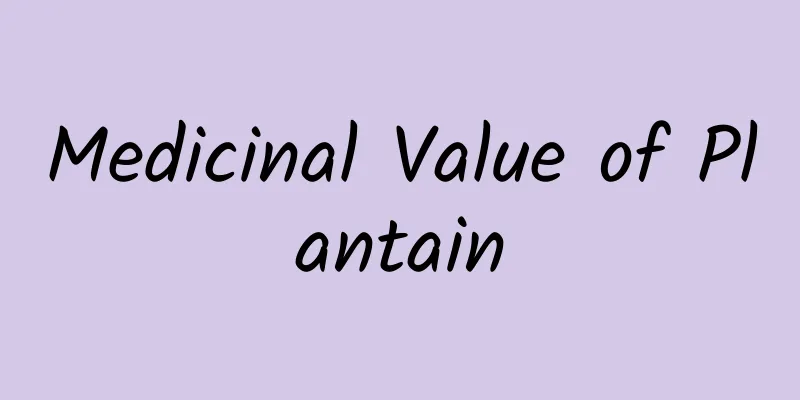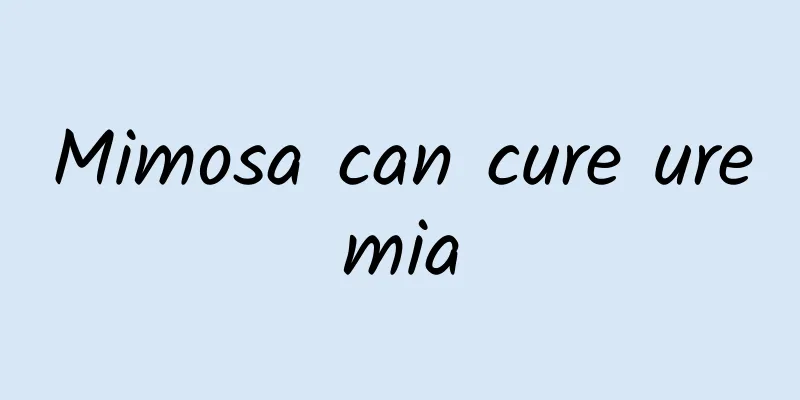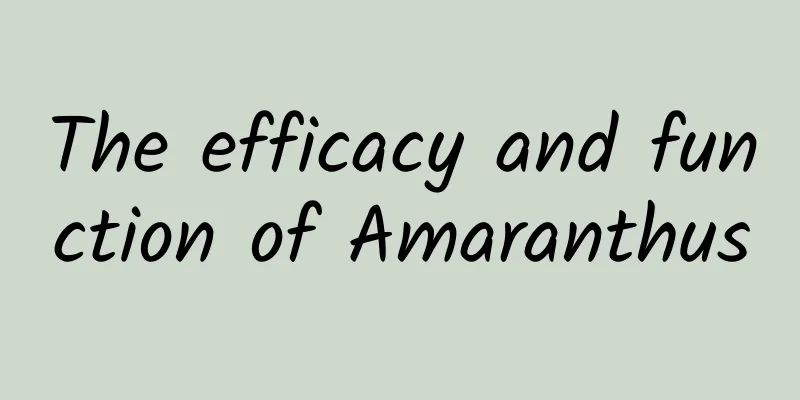Medicinal Value of Plantain

|
Plantain is a common Chinese herbal medicine. We often see many people using plantain to soak their feet. People usually choose Chinese medicine that is beneficial to promoting metabolism for foot soaking. So plantain has this medicinal value. In addition to this, what other medicinal values does plantain have? What diseases can we use plantain to treat? Let's take a look below. Plantain has a wide range of medicinal value. We can use plantain in many aspects. Plantain has the function of clearing away heat and detoxifying. Plantain can clear our liver fire. Plantain has the benefit of cooling blood. Plantain is also conducive to the excretion of urine and can treat diseases such as urinary problems. Plantain is sweet and cold in nature, and has the effects of promoting diuresis, clearing heat, improving eyesight and removing phlegm. It is mainly used to treat gonorrhea, hematuria, urinary obstruction, jaundice, edema, dysentery, diarrhea, red and swollen eyes, sore throat, etc. "On the Nature of Grass" states that "it can treat hematuria, nourish the five internal organs, improve eyesight, facilitate bowel movements, and relieve the five types of stranguria." "Bencao Fengyuan" states that "it is forbidden to use if one is weak and has loose sperm and qi." Nature, flavor and function: sweet, cold, and enters the hand-taiyang and yangming meridians. It can promote diuresis, clear away heat, improve eyesight and eliminate phlegm. It is used for urinary obstruction, stranguria, leucorrhea, hematuria, jaundice, edema, febrile dysentery and diarrhea, epistaxis, red and swollen eyes, sore throat, cough and skin ulcers. Plantain for treating chronic bronchitis: Take 30-60 grams of dried plantain daily, double the amount for fresh plantain. Soak it in cold water for 30 minutes first, boil it over high heat twice and take 1 dose per day. Use it for 3-5 days to relieve symptoms or cure the disease. This prescription is particularly effective for lung heat, cough and asthma. It can increase bronchial secretions, slow down respiratory movements, and have the effect of resolving phlegm and relieving cough. Plantain for treating whooping cough: Take 30-60 grams of dried plantain every day, double the amount for fresh plantain, boil it into a thick juice, remove the residue, add 30 grams of honey and mix well, take it 3-4 times a day. Clinically verified that 20 cases of whooping cough recovered within a week for mild cases and about half a month for severe cases. Plantain for treating mumps: Take 30-60g of dried plantain daily, double the amount for fresh one, decoct in water twice, add 300ml of water for the first time and boil until it reaches 100ml, add 200ml of water for the second time and boil until it reaches 100ml, mix the two medicinal liquids and take them in two times. Generally, taking it continuously for 3-5 days can relieve or cure the disease. For severe cases, the dosage can be increased as appropriate. Plantain for treating acute icteric hepatitis: Take 60 grams of dried plantain daily, double the amount for fresh plantain, decoct in water and take twice. The author has used this medicine to treat cases of acute icteric hepatitis (i.e. hepatitis A), with an overall effective rate of 98.8%. The appetite recovered in 5 to 7 days, and the jaundice subsided in 14 days. Plantain for treating gouty arthritis: Take 30-60 grams of dried plantain, double the amount for fresh one, decoct in water twice and take 1 dose per day, continuously. Symptoms will be relieved within 12-15 days after taking the medicine. To prevent recurrence, I took 10 to 15 doses of the medicine every 20 days, and there was no recurrence. Plantain treats mouth and tongue ulcers: Take 30 grams of dried plantain every day, double the amount for fresh plantain, decoct in water twice, add appropriate amount of white sugar and take orally in 2 times, 1 dose per day. The author has treated 35 cases of this disease, and most patients recovered within 2 to 4 days. Plantain treats hypertension: Take 30 grams of dried plantain every day, double the amount for fresh plantain, decoct in water twice, and drink as tea. The above method was used to treat 50 cases of hypertension, and the patients underwent 1 month of treatment. Systolic blood pressure dropped to less than 20 kPa (150 mmHg) in 23 cases, and diastolic blood pressure dropped to less than 12 kPa (15 mmHg) in 6 cases. Plantain for treating glaucoma: Take 60 grams of dried plantain daily, double the amount for fresh plantain, decoct it in water twice, combine the two decoctions and take it in two divided doses. After clinical treatment of 10 cases of this disease, it was found that after taking the medicine for 2 to 3 days, the headache and eye pain were relieved, the pupils shrank to normal, and the vision improved. Plantain is used to treat diarrhea in children: Take 30 grams of dried plantain, double the amount for fresh one, 1 dose per day, decocted in water twice and taken. Generally, the disease will be cured in 1 to 2 days. Plantain for treating bacterial dysentery: Take 60 grams of dried plantain daily, double the amount for fresh plantain, decoct twice in water, mix the two medicinal liquids evenly, take three times a day, for 7 to 10 days. Treatment of latent nephritis: Take fresh plantain, wash and grind it, 50 to 100 grams per day, take the fresh juice orally, 30 ml each time, 3 times a day, observe and treat for 8 weeks, the total effective rate is over 85%. Treating Gout: Plantain is effective in treating gout. Plantain is a commonly used diuretic and stone-removing drug. It can promote the excretion of uric acid, inhibit and remove urate crystals, thereby achieving the purpose of treating gout. It is effective for patients with early gout. Plantain is often used in the treatment of gout. It can be made into a compound prescription or used alone as needed. Clinically, plantain is often used alone to make tea to lower uric acid, which has a certain effect. However, plantain has a strong diuretic effect, and long-term use may have adverse effects on the kidneys. |
<<: Side Effects of Pueraria Mirifica
Recommend
If you see these at the beach in summer, run away! Don't touch them with your hands
Due to the high temperatures in recent days, visi...
The universe is so big, why can't we find alien civilizations? They may have collapsed before interstellar expansion
The universe we live in is a space that is so vas...
The efficacy and function of yellow mud vegetable
Speaking of yellow mud vegetable, many people kno...
What are the effects of Chinese medicine Luobu Ma leaves
Luobu Ma leaf is a plant, also called tea flower ...
The efficacy and function of Longxu Teng [picture]
Friends who don’t know about Dragon’s Beard Vine ...
The efficacy and function of lamb's ear grass
Sheep's ear grass has many functions in daily...
What are the effects and functions of Ginseng Jianpi Pills?
Ginseng Jianpi Pills have the effects of replenis...
What is it like to fall in love with AI? Netizens: It's too addictive!
Recently, a blogger on a social platform posted a...
The efficacy and function of Sclerocarpus sclerophylla
Chinese medicinal materials are very effective in...
Is it true that sour boys and spicy girls are the same? The gender of the child is determined at this time...
gossip "Those who like to eat sour food duri...
Don’t say “pink and tender”, it is the real version of “beautiful scenery in the desert”
There are countless magical and beautiful plants ...
The patron saint of health is actually this "flowerless" fruit
Fig is a plant that can be used as both fruit and...
The effects and functions of ivy
Ivy is a kind of traditional Chinese medicinal ma...
Seahorse antler, ginseng and wolfberry wine recipe
In life, most people know that seahorse, deer ant...
The efficacy and function of Anlongxiangkeke
Recently, major TV channels have launched various...









